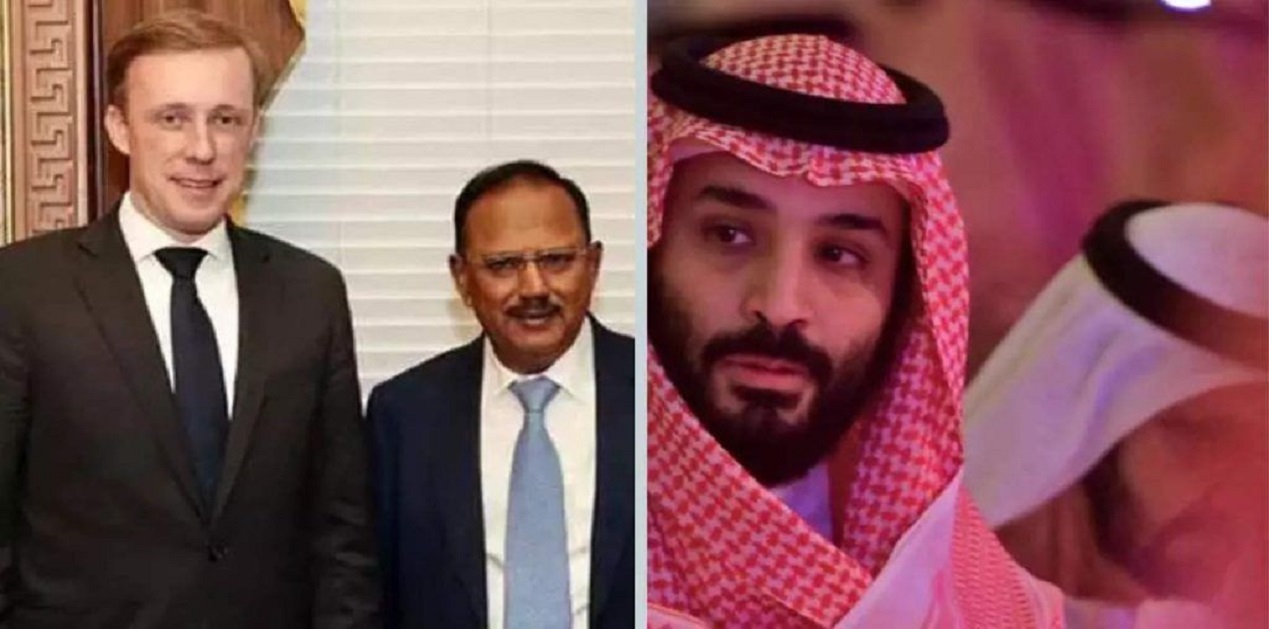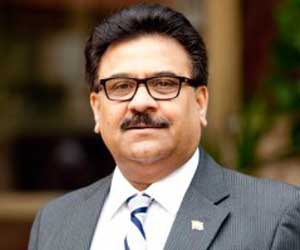In the wake of unprecedented developments in West Asia especially the demarche and rapprochement by major Gulf powers in recent times, the meeting of National Security Advisers of USA (Jake Sullivan), India (Ajit Doval), and UAE (Sheikh Tahnoun) in Riyadh with Crown Prince Mohammed Bin Salman was highly significant for more than one reason. Each one may have had their own agendas and concerns yet the proposed multi-modal inter-regional connectivity proposals have definite dividends for New Delhi. The proposal to connect the West Asia and South Asian regions through, railways and ports and maritime linkages will have tremendous business opportunity for India which is a nation with one of the largest railway networks in the world and whose private and public sector has been engaged in this infrastructural domain in many countries. But that is not all. The strategic linkage will further enrich India’s stakes in its extended neighbourhood which has turned its strategic partner from a transactional relationship in last decade or so.
China is indeed a factor both for India and USA after it has been able to broker a deal between Riyadh and Tehran. More so, Washington appears to have been kept out of the suspense until before the deal was done. The fact remains that Riyadh especially has been miffed with the slighting commentaries against the Crown Prince and PM Mohamed bin Salman who had also recently aligned the Saudi Vision 2030 with the Chinese Belt and Road Initiative (BRI) in which 20 other countries from the Middle East have been partaking from Tehran to Tel Aviv. Besides the USA’s perceived withdrawal from the region, welcomed by Tehran, has been a cause of concern for most of the major regional powers especially Saudi Arabia and UAE. Consequently, they have developed their Act East policy focussing on their markets and partnerships with China, India and even Russia within the context of OPEC+. They have not been supportive of sanctions regime against Moscow and have even provided a currency routine for trade and transactions to Russian exports while maintaining and even promoting the bilateral relationship at the usual pace. Developing trend is also a closer association with Chinese and national currencies which could have an impact on de-dollarization and has been disconcerting for US whose focus has been diverted to Eurasian War and ever so potent Chinese expanding heft in nearly all geographies including the Indo-Pacific.
Hence, Jake Sullivan’s visit was to possibly get the feel as to what the Saudi and Emirati assessments of the Iranian olive branch portends after the normalization of ties between the two major regional powers and how sincere the Tehran regime is in the proposed regional security architecture and the Yemen crisis. What role could possibly USA play in it despite the overt hostility with the Ayatollahs! Washington has been trying very hard to weave a peace carpet through Abraham Accords from Israel to UAE to Bahrain to Morocco and Sudan by keeping the Palestinian factor obfuscated under it. It has paid some dividends but the regional majors are also interested in a modus vivendi with their neighbourhood and geo-political challenges especially when they find it difficult to bank on a distracted Biden Administration. Hence, they prefer regional geo-economic collaborations to advance their quest for a middle and modern power status while retaining their respective regional edge. Abu Dhabi’s ‘No Problem’ policy is an adjunct to this as it has already normalized ties with Tehran also some time back.
Is a new sub regional framework emerging like the I2 U2 which has India, Israel, USA and UAE as the constituents and was often flagged as the West Asian QUAD -where significant progress on the ground has been achieved with major projects in the pipeline? In the new one while for historic reasons Tel Aviv has not been included as of now -other three are going to be very much part of it with Saudi Arabia as the lead. For the ease of convenience it may be termed as IUSU (India, USA, Saudi Arabia and UAE). Still in its infancy but has tremendous potential especially on project to project basis and as long as it does not predicate overtly on neutralizing Chinese initiatives. Pursuing its 1+2+3 policy (energy +Infra+ high-tech and space etc) China has already got access to major regional ports and is engaged in infrastructure building projects in key strategic sectors. Under the given circumstances it is unlikely that the regional majors, hankering for and exercising their strategic autonomy would prefer a sectarian and partisan path of willful confrontation especially like India they consider China as non-prescriptive and non-interfering in their internal affairs. Hence, collaboration with India and her presence in the I2U2 and IUSU do provide the groupings a better chance of success. For Washington while it will secure its traditionally vast markets for defence products and bases in the region it is trying to manage the fallout from going beyond repair. White House said that the visit and connectivity project was “to advance their shared vision of a more secure and prosperous Middle East region interconnected with India and the world.”
There are significant opportunities for India in infrastructure development in the Middle East as most countries are embarking on beefing of their visions. Last year the GCC (Gulf Cooperation Council) had decided to develop a $ 100bn 2177 Kms long network connecting the member states through high speed railway projects. Chinese companies are engaged in Saudi Arabia’s $500 bn NEOM dream city project and built high speed Haramain Express as well as connecting holy cities of Mecca and Medina. They have also undertaken Railway projects in Turkey, Iran, Israel, Egypt and Djibouti. Reports indicate that for BRI’s connectivity- Ports and industrial parks have been central to such cooperation, as they create an economic chain that links China to the Gulf, the Arabian Sea, the Red Sea, and the Mediterranean. These include the UAE’s Khalifa Port, Oman’s Duqm Port, Saudi Arabia’s Jizan Port, Egypt’s Port Said, and Israel’s Ashdod and Haifa ports to secure global supply chains and ensure its energy security. US has objected to some of these. Chinese companies are also likely to play a significant role in reconstruction projects in Iraq, Syria, Lebanon, and Yemen. Hence the US objective is to propose an alternate strategic infrastructure plus format in the matrix of its Build Back Better and Blue Dot Network schemes. Whether at a future date such criss-crossing projects will intersect in a positive Venn diagram matrix or work at cross purposes remains to be seen! The Israeli Foreign Minister Eli Cohen currently visiting India did mention the extension of the proposed Railway network to Europe via Haifa Port in Israel.
Presence of Indian National Security Adviser at this IUSU meeting, after his visit to Tehran a week before, was crucial. More importantly, the potentially carved out role for developing quality infrastructure will also cater to India’s energy security, hopefully seamless connectivity and trade and transit as well as to the benefit of 9 million strong Indian diaspora. For long we have not been able to advance on TAPI (Turkmenistan , Afghanistan, Pakistan and India) and IPI ( Iran, Pakistan and India) oil and gas pipelines due to Pakistan / Afghanistan factor but perhaps time has come for India to look at alternate gas pipeline routes from the Gulf to ensure her own energy security. Most critically, India has begun to think in sub-regional and Regional terms in West Asia and not only in bilateral formats which is a welcome development.
(The paper is the author’s individual scholastic articulation. The author certifies that the article/paper is original in content, unpublished and it has not been submitted for publication/web upload elsewhere, and that the facts and figures quoted are duly referenced, as needed, and are believed to be correct). (The paper does not necessarily represent the organisational stance... More >>
Image Source: https://india.postsen.com/world/514458.html











Post new comment